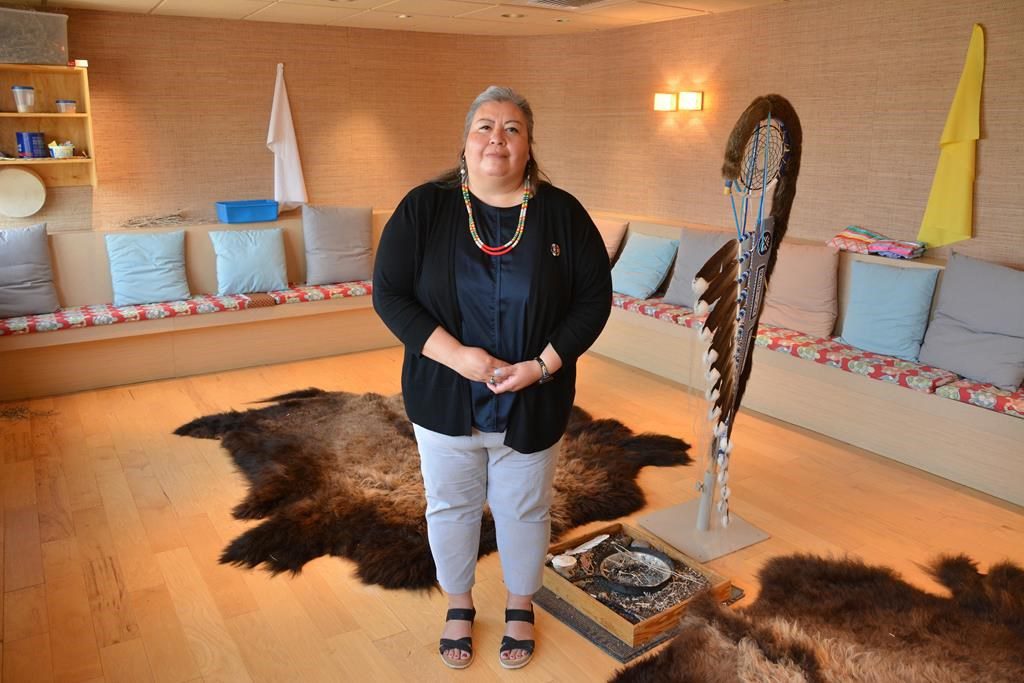Jason Young measures the success of his students from one year to the next, celebrating wins both big and small.
The director of education for Saskatchewan’s Northern Lights School Division, which is responsible for most of the province’s northern communities, says it’s important to highlight every bit of progress among Indigenous students despite graduation rates remaining relatively low.
“It’s looking for those instances where there is success and building upon that,” Young said in a recent interview.
“Whether it’s a 50-per-cent graduation rate and we saw a three per cent increase or whether it’s 60 per cent and we see a five per cent increase, we just celebrate where we’re at and the progress we’re making year-over-year, as opposed to making comparisons with other people in the province.”
Saskatchewan auditor Tara Clemett recently looked at the graduation rates among Indigenous students and whether the Saskatchewan Party government has done enough to boost those figures.
She found rates have been relatively unchanged.
In 2021, about 45 per cent of Indigenous students graduated in three years after entering Grade 10 and 62 per cent of them graduated within five years.
The government had set a three-year target of 65 per cent by 2020 and a five-year target to at least 75 per cent by that year.
In 2021, the three-year graduation rate for non-Indigenous students was 89 per cent and the five-year rate was 92 per cent.
The issue has been considered more critical in Saskatchewan because 19 per cent of the total student population is Indigenous, and that proportion is expected to grow.
Clemett said those without a high school diploma are “significantly disadvantaged,” which results in limited employment opportunities.
“The disparity in graduation rates between Indigenous and non-Indigenous students, along with Saskatchewan’s increasing Indigenous population growth, makes it important for the education sector to make concerted efforts to improve educational outcomes for Indigenous students, which benefits both the students and the province as a whole,” she said in her report.
At the Northern Lights School Division in 2021-22, 23 per cent of Indigenous students graduated within three years and 51 per cent graduated within five years. Ten years ago, the three-year rate was 26 per cent and the five-year rate was 35 per cent.
Despite slight dips in the three-year rate, Young said there has been success in some schools throughout the district.
For example, he said the Twin Lakes Community School in Buffalo Narrows had a total graduation rate of 66 per cent.
Young said the school has two Indigenous administrators who are doing an excellent job working with parents and youth. The school also offers courses tailored to the community, including mental-health and land-based teachings.
“I think when the auditor’s report came out, it allowed us to do some reflection, and part of that reflection is looking at our graduates within our own school division,” he said. “Now we have to build on that.”
At Regina Public Schools, graduation rates among Indigenous students appear to have steadily increased. In 2021-22, the three-year rate was 44 per cent and the five-year rate was 59 per cent. Ten years ago, the three-year rate was 27 per cent and the five-year rate was 45 per cent.
Vanéa Cyr, the supervisor of Indigenous education at Regina Public Schools, said she’s not seeing as many kids attend school as she would like, but believes programs have helped.
Cyr said reasons behind the lower figures include higher rates of poverty and homelessness, as well as intergenerational trauma and less access to food.
She said more teachers who can provide Indigenous education are needed. Students should also be assessed at an earlier age so instructors can identify gaps sooner, she added.
“We can’t keep doing the same thing over and over and over again, and expecting the same result,” she said. “I think when we prioritize Indigenous content and treaties and truth and reconciliation, I think that gap will start to close.”
Clemett recommended the government expand targets beyond graduation rates and do assessments earlier, which would allow teachers to address issues sooner before it’s potentially too late. If targets aren’t met, she recommended action plans should be developed and followed.
Young said additional resources to address mental health are needed, noting schools have been short on councillors. He also said more language and cultural programs can help.
“Those (language and cultural) pieces are being revisited, which is exciting,” he said. “And I think that needs to continue.”
This report by The Canadian Press was first published June 17, 2023.
Jeremy Simes, The Canadian Press








